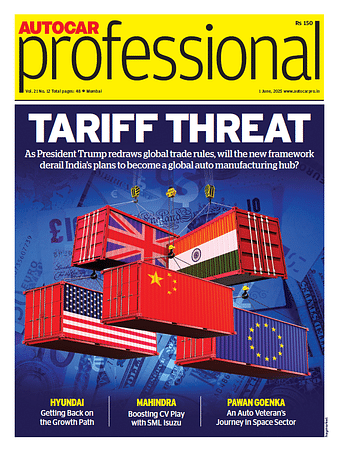Charging Towards a Greener Future: The road to carbon neutrality for EV manufacturers
As the automotive industry evolves, collaboration across the supply chain is crucial.
The climate crisis demands urgent action, and the transportation sector, a significant contributor to global emissions, is undergoing a fundamental transformation. Electric vehicles (EVs) are widely recognised as a crucial solution, with ambitious targets set worldwide.
The International Energy Agency predicts that by 2030, nearly one in three cars in China and one in five in the United States and Europe will be electric.2 This transition presents both challenges and opportunities for EV manufacturers striving to achieve carbon neutrality.
Achieving net-zero emissions requires a holistic transformation of the entire EV supply chain. Every stage of an EV's lifecycle, from raw material extraction and battery production to vehicle manufacturing, use, and end-of-life, must be scrutinised and optimised for minimal environmental impact.
The Battery Challenge:
A significant source of emissions in EV manufacturing lies in the production of batteries.4 With over 750 GWh of capacity required in 2023 alone, battery production accounts for approximately 40 percent of the total emissions generated in manufacturing an electric vehicle. Decarbonising this process is non-negotiable.
One of the most effective strategies is electrifying the production process and transitioning from fossil fuels to low-carbon electricity in manufacturing plants. This can significantly reduce emissions. Moreover, the adoption of cleaner energy sources, such as solar and wind power, can further enhance the environmental performance of these plants. For example, Tesla is powering its Gigafactories with renewable energy sources, significantly reducing its carbon footprint.
Advanced software tools can help manufacturers optimise their energy consumption. By identifying inefficiencies, pinpointing maintenance needs, and tracking energy use trends, these tools can drive continuous improvement in energy performance and reduce carbon emissions. For example, AI-powered platforms like Siemens' Opcenter Execution Discrete Industries optimise energy consumption in real-time, identifying inefficiencies and predicting maintenance needs. This results in significant energy savings and reduced emissions.
Beyond the Battery:
While batteries are a crucial focus, manufacturers must also address emissions across their entire operations. This includes:
• Sustainable Material Sourcing: Prioritising recycled and sustainably sourced materials for vehicle construction. This includes steel, aluminum, and plastics. For example, Volkswagen is committed to sourcing battery materials from sustainable mines and investing in closed-loop recycling programs to minimize environmental impact.
• Energy-Efficient Manufacturing: Implementing energy-efficient equipment and processes in assembly plants, such as optimised lighting, heating, and cooling systems. Volvo's Torslanda plant in Sweden is powered by 100% renewable electricity and utilises a closed-loop water recycling system.
• Waste Reduction: Minimizing waste generation through circular economy principles, including reusing and recycling materials and components.
• Green Logistics: Optimising transportation and logistics to reduce fuel consumption and emissions.This can involve using electric trucks, optimising delivery routes, and consolidating shipments.11 Ford is electrifying its delivery fleet and optimising logistics routes to minimize transportation-related emissions.
Leading the Charge:
Several EV manufacturers are already taking significant strides towards carbon neutrality. These examples demonstrate the industry's commitment to sustainability.
The Road Ahead:
The journey towards carbon neutrality requires continuous innovation and collaboration. Emerging technologies like solid-state batteries, which offer higher energy density and improved safety, hold promise for further reducing the environmental impact of EVs. Companies like QuantumScape are leading the development of this technology.
Furthermore, vehicle-to-grid (V2G) technology, which allows EVs to feed energy back into the grid, can help stabilise energy supply and increase the use of renewable energy sources. Nissan is pioneering V2G integration with its Leaf models.
As the automotive industry evolves, collaboration across the supply chain is crucial. Manufacturers, suppliers, energy providers, and policymakers must work together to create a sustainable ecosystem for EV production and use.
In conclusion, the transition to electric vehicles is essential for combating climate change. By embracing innovative technologies, optimising manufacturing processes, and prioritising sustainability throughout the entire lifecycle of their products, EV manufacturers can lead the charge towards a greener future for the automotive industry.
Disclaimer: Ankita Patwa is an Environmental Manager at Foxconn EV System LLC. The views expressed are purely those of the author.
RELATED ARTICLES
The Growth of the Second-hand/Refurbished Bike Market in India
As rising costs and changing mindsets reshape mobility, India’s used two-wheeler market is gaining momentum—driven by af...
Opinion: How will KTM Change After the Bajaj Takeover?
Now that we know KTM has been saved, the question is what its future identity will be.
Why Leasing Dominates India’s Commercial EV Market
Leasing dominates India's commercial EV sector as fleet operators seek to mitigate high upfront costs, battery uncertain...





 15 Dec 2024
15 Dec 2024
 6364 Views
6364 Views





 Sarthak Mahajan
Sarthak Mahajan


 Autocar India
Autocar India


